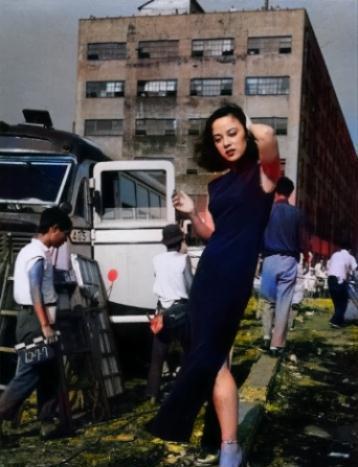Unforgettable moments in history: Wang Jingwei braved the rain to visit a Japanese shrine, Figure 5 Japanese pirates waiting for beheading

Figure 1: 【
Li Xianglan, who was born with a good life
After the victory of the War of Resistance, Li Xianglan was tried as a "cultural traitor", but because her biological parents were Both Japanese, she was finally acquitted. Li Xianglan is born with a good life, the treatment of pulmonary diseases to learn bel canto was discovered by the scouts, singing from childhood on the radio in the pseudo-Manchurian country, foster Chinese family to learn Mandarin, college and Kawashima Yoshiko as a brother and sister, was full of daily coaxing to make movies. Become the number one star. After Japan's defeat, the Russian fa Xiaoliuba hid his identity certificate in the Japanese puppet, carried it to Li Xianglan, and successfully escaped back to Japan. After returning to Japan, it is not bad to marry, and he still stays in the west and becomes a diplomat, and he is also a long-lived old man
Figure 2【
Yoshiko Kawashima, who was three or four times lower in front of the devil
Yoshiko Kawashima was the daughter of Prince Su of the Qing Dynasty, Yoshiki, who was sent to Japan at the age of 6 for "restoring the country with the power of Japan." After returning home, Yoshiko Kawashima has become a mature spy. While trying to restore the Kwantung Army, she actively participated in the Japanese plan to invade China. After the establishment of the puppet state of Manchukuo, she served as the commander-in-chief of the Anguo Army, participated in a large number of espionage activities, and stole countless intelligence for the Japanese army. At this time, Yoshiko Kawashima had completely forgotten that China was her hometown, and brought many major troubles to China's War of Resistance. It's in the photo
Figure 3【
Wang Jingwei braved the rain to visit a Japanese shrine
Wang Jingwei is a "traitor", there is no doubt about it. He went from being a "hero of the Alliance who "drew the knife into a quick and did not live up to the head of a teenager" and sacrificed himself to assassinate the regent, to becoming an enemy of the people and a traitor. During the War of Resistance Against Japanese Aggression, Wang Jingwei, who became a "traitor," visited Japan as "head of state." Other traitors who accompanied him on his visit included Zhou Fohai, "vice president of the Executive Yuan," Xu Liang, "foreign minister," and Lin Baisheng, "propaganda minister." This photo shows Wang Jingwei braved the rain to visit meiji Jinggong on June 19, 1941. Meiji Jingu Shrine is a shrine located in Yoyogi, Shibuya-ku, Tokyo, dedicated to Emperor Meiji (who died in 1912) and Empress Shōken.
Picture 4: In 1940, Japanese Emperor Hirohito and Hideki Tojo were visiting the Yasukuni Shrine, and there were many Japanese officers bowing and saluting next to them
。 Hideki Tojo (30 December 1884 – 23 December 1948) was a Class A war criminal of the Japanese army invading China, a representative figure of Japanese militarism, the 40th Prime Minister of Japan, a Class A war criminal of World War II, and one of the important criminals who invaded China and launched the Pacific War. Because of his arbitrary behavior and fierceness, he was known as the "Razor General" in the Kwantung Army.
Figure 5【
Japanese pirates waiting to be beheaded
This is a picture taken by the Chief Reporter of the Times in China in the 1880s, the scene of the execution of pirates in Kowloon, Hong Kong, and some Japanese pirates in addition to the executed pirates. Some of the pirates in the picture have obvious characteristics of Japanese clothing.
The "Tsukiyo head" in the second left of the front row of the picture is an important symbol of the Japanese samurai.
It follows from this that there are many samurai in Japanese society who have gone into exile overseas and become ronin, and those who have fled away may be these pirates.